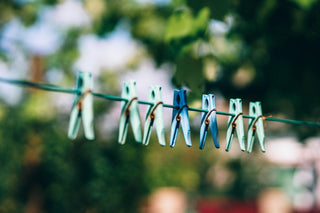Creating a wardrobe that's both stylish and sustainable doesn't have to be a challenge. It's about making thoughtful choices that not only enhance your personal style but also help the planet. At Ginger and Sage, we believe fashion is both an art form and a responsibility. That's why we're sharing 10 new tips to help you build a conscious and sustainable wardrobe.
1. Start with a minimalist approach
A minimalist wardrobe doesn't mean limiting yourself, but it does mean simplifying your wardrobe and choosing only pieces that truly contribute to your style and functionality. Quality over quantity is key: buy less, but choose pieces that are versatile and that you love. A smaller, well-organized wardrobe encourages more creativity and less waste.
2. Focus on versatile, multifunctional pieces
Choose clothes you can wear in different ways. For example, a versatile jacket that can be worn over a dress or jeans, or a top that can be styled both casually and chicly. The more ways you can wear a piece, the more sustainable it is for your wardrobe—and for the planet!
3. Buy clothes that flatter your body and style
Instead of choosing items you "have to" wear because they're trendy, look for clothes that flatter your figure and that you enjoy wearing. Fashion is personal, and by investing in clothes that boost your confidence, you'll wear them more often. When you feel good in your clothes, you extend their lifespan, which contributes to sustainability.
4. Support local and ethical brands
By supporting local and ethical brands, you help small producers and artisans who produce responsibly. Look for brands that are transparent about their production processes, use sustainable fabrics, and guarantee fair working conditions.
5. Learn the art of clothing care
A sustainable wardrobe starts with taking good care of your clothes. Wash your clothes less often, use organic detergents, and prevent wear and tear by washing and storing them correctly. Small adjustments like hand-washing delicate items or avoiding the dryer can significantly extend the life of your clothes.
6. Review your wardrobe regularly
It's important to regularly review your wardrobe. Ask yourself: "Do I really need this clothing?" and "Do I wear this item regularly?" If you notice you haven't worn something in months, consider donating or selling it. This will keep your closet organized and give clothes you don't wear a second life.
7. Upcycle old clothes
Clothes you no longer wear can still be given a new life. Upcycling is a great way to transform unwanted clothing into something new and creative. Turn an old pair of jeans into a bag, add embroidery to a simple shirt, or transform a vintage scarf into a beautiful headband. Upcycling adds a unique touch to your wardrobe and is a fantastic example of sustainable fashion.
8. Learn to repair clothes
Instead of throwing away your damaged clothes, learn how to make small repairs yourself. Learning basic repairs like mending a loose seam, replacing a zipper, or reattaching a button can significantly extend the life of your clothing. This not only prevents waste but also gives you the satisfaction of creating something beautiful from something old.
9. Consider clothing rentals or clothing swaps
Instead of buying new items every season, consider renting clothes for special occasions or swapping clothes with friends or family. This is a great way to add variety to your wardrobe without the pressure of constantly buying new clothes. Clothes swaps can be a social event where you share clothes and add new pieces to your wardrobe without wasting money.
10. Choose Slow Fashion instead of fast trends
Instead of embracing fleeting fashion trends that change every season, consider slow fashion : clothing that is timeless, made to last, and carefully produced. Slow fashion is all about quality, craftsmanship , and consciously choosing brands that produce with care and respect for people and the planet. Slow fashion places more emphasis on the longevity of the garment than on fleeting fashion trends. This means buying new clothes less often, but adding pieces that not only enrich your wardrobe but also enhance the sustainability of your choices.

